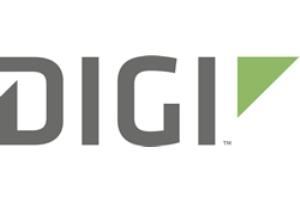Next-gen networks for an IoT driven world

As I continue to meet with customers that maintain a network of connected devices, I’m often asked what the future of networks looks like in the IoT-driven world. As we consider wide-ranging initiatives –both market-driven and industry-driven – that affect the roadmap for IoT, I think there are certain initiatives that, on a closer look, represent the most promising areas of impact and return: Industry 4.0, smart cities, and the Food Safety Modernisation Act, says Joel Young, senior vice president of research and development and chief technical officer, Digi International.
The criteria below address key issues that must be considered in connection with each of these initiatives, including security, network capability, network protocols, energy usage, and more:
Measurable IoT: Any IoT solution should be able to define verifiable measures of ROI – revenue growth, projected cost savings, customer satisfaction, product-design, enhancement, or other metrics. This may seem obvious, but you wouldn’t believe the number of customer I meet with that don’t yet have a grasp of the problem they are solving,
Self-healing networks: Networks and devices must work cooperatively to provide updates on the health of the entire network ecosystem. Each will become more aware of their own state and transition from reacting in a descriptive manner to providing predictive operations by identifying areas of weakness and proactively addressing them.
Adaptive design: Gateways, routers, and sensors will learn to assist in discovery. Once they understand causes and effects of network operations, they can adapt accordingly for future implementations. This builds on the self-healing networks, by providing insights into the devices themselves.
Protocol-forward: Devices in next generation IoT networks are either extremely “fluent” – able to adapt to nearly every protocol, or act at level of abstraction where the protocols are irrelevant. Remember, a device doesn’t need to know all aspects of a protocol, only enough to get the job done.

Joel Young, senior vice president of research and development and chief technical officer, Digi International
Connectivity-judicious: Smarter IoT devices know when they should be open to interaction or “detach” when the information within their purview is not essential or important. This drives communications efficiency and security. It is not about collecting lots of data, but the right data.
Energy self-aware: The network and devices must be capable of acting in multiple modes based on operating conditions – to either be self-powered (battery), semi-self-powered (solar), or power-reliant (direct power source).
Instant deployability: Recent technology designs (pre-certifications and formation of industry standards, the promises of “plug-and-play”) are coming closer to reality. Devices should become so self-directed and contained that implementation no longer relies on technician expertise to tailor each implementation.
Inherent security: A digital fingerprint verification can be applied in the security process where authentication and authorisation become integral to the network. This extends beyond simple access control to true intrusion detection and immunity.
Environmentally expansive: To address a “sensors-everywhere” world aspects of environmental hardening (NEMA enclosures, temperature operating ranges, etc.) are applied to underlying data highways (RF, cellular, wired). This takes us beyond the simple prototype to a truly scalable system.
Reportability: Technologies must be able to deliver forensic capabilities to assist with creating a history of performance to assist in any diagnostic needs.
As the number of devices and the market consistently grows over the next few years, IoT networks must also evolve. The overarching initiatives driving the future of these networks necessitate that some very specific features and capabilities be architected into next-generation networks. This will help future-proof those networks and help us achieve the promise of a connected world faster.
The author of this blog is Joel Young, senior vice president of research and development and chief technical officer, Digi International.
About the author:
Joel Young has more than 29 years of experience in developing and managing data and voice communications. He joined Digi International as vice president of engineering in June 2000 and is currently the vice president of Research and Development and chief technical officer.
Comment on this article below or via Twitter @IoTGN
